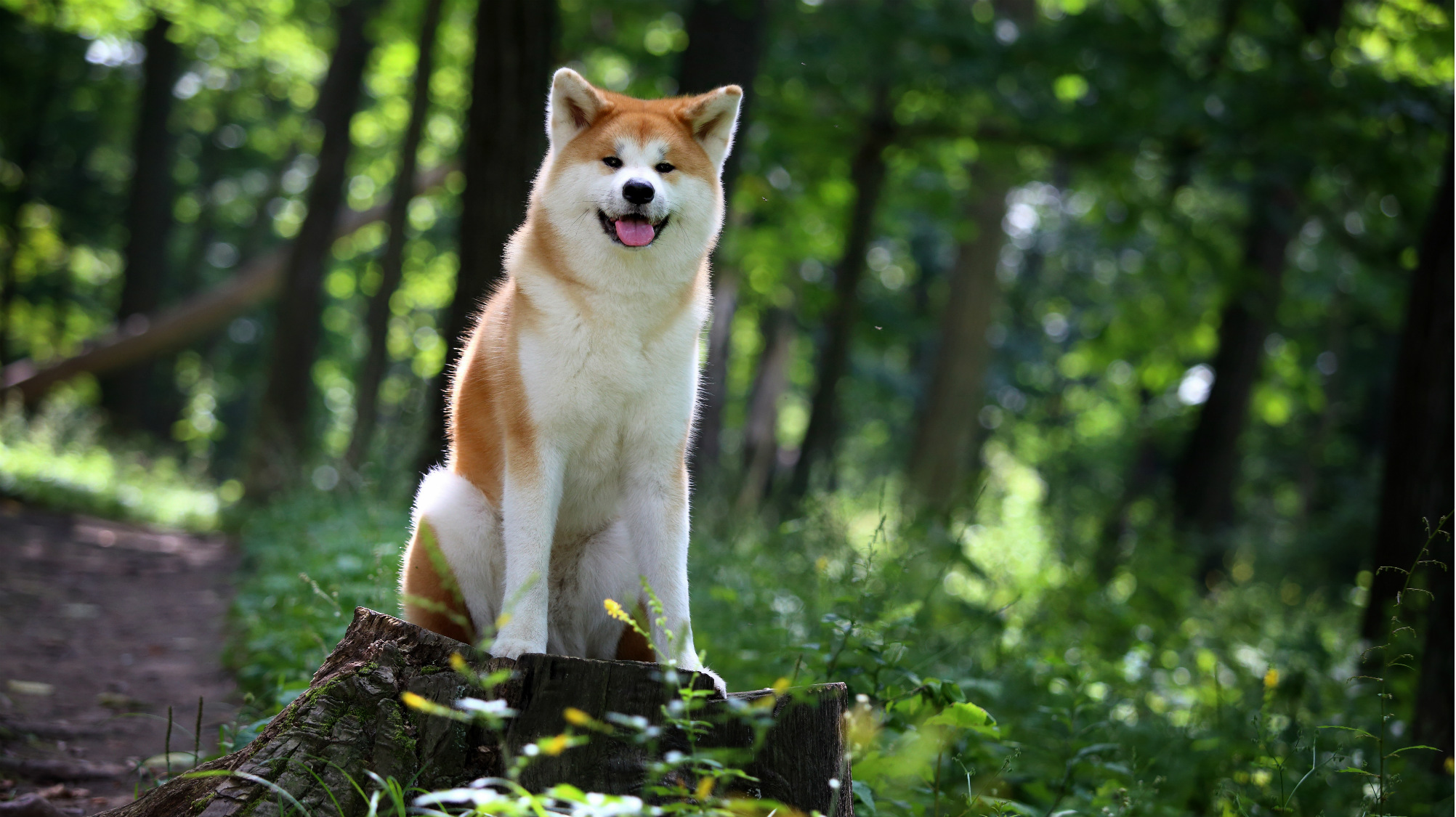Akita - Japanese
Temperament: Calm, brave, intelligent and headstrong, the Japanese Akita, or Akita Inu, requires an experienced owner to bring out his best self.
Height: Males: 25-28 inches Females 23-25 inches
Weight: Males: 90-120 pounds; Females 60-90 pounds
Life Span: 10-13 years
Breed Average Outlier Index: 0.25
OI Average for dogs over 10: 0.25
OI Average for dogs under 2:
Deprecated: number_format(): Passing null to parameter #1 ($num) of type float is deprecated in /usr/local/www/wp-content/plugins/xyz-wp-insert-code-snippet/shortcode-handler.php(225) : eval()'d code on line 318
0.00
Breed Average Genetic Relatedness: -0.01
AGR Average for dogs over 10: -0.01
AGR Average for dogs under 2:
Deprecated: number_format(): Passing null to parameter #1 ($num) of type float is deprecated in /usr/local/www/wp-content/plugins/xyz-wp-insert-code-snippet/shortcode-handler.php(225) : eval()'d code on line 322
0.00
Breed Average Internal Relatedness: 0.01
IR Average for dogs over 10: 0.01
IR Average for dogs under 2:
Deprecated: number_format(): Passing null to parameter #1 ($num) of type float is deprecated in /usr/local/www/wp-content/plugins/xyz-wp-insert-code-snippet/shortcode-handler.php(225) : eval()'d code on line 326
0.00

Last 10 Recently Added Public Dogs!
| No. | Name | Gender | Outlier Index | Average Genetic Relatedness | Internal Relatedness | 1 | Akiyo Go Kobun | F | 0.27 | -0.04 | -0.08 | 2 | Izumiryuu Go Kaijusou | F | 0.30 | -0.12 | 0.05 | 3 | Unmei No Elias | M | 0.18 | 0.02 | 0.24 | 4 | Unmei No D'Warmaster | F | 0.32 | 0.01 | -0.05 | 5 | Unmei No Daiushi | F | 0.27 | 0.00 | -0.03 | 6 | Unmei No C'Kuma | M | 0.24 | 0.02 | 0.01 | 7 | Unmei No C'Renji | M | 0.27 | -0.08 | 0.12 | 8 | Unmei No C'Reza | M | 0.19 | 0.07 | -0.01 | 9 | Unmei No Chappie | M | 0.21 | 0.02 | 0.06 | 10 | Garyuu Go Kaijusou | M | 0.25 | -0.01 | 0.00 |
|---|
The follow includes dogs with birthdates listed in the database.
DLA Haplotypes in the Breed
The Dog Leukocyte Antigen or DLA is the region in the canine genome that controls the immune system, among other things. There are three classes or areas, and the VGL Canine Diversity Test genotypes or records the two regions with the most variation. Because it is an area that mutates more rapidly than others, the method VGL uses is ideal for identifying specific combinations of DNA, and not merely showing whether a dog inherited two of the same sets of genetics from its parents or two different ones.
"Haplotype" is a generic name for a set of genes that are bound together and inherited as a set. The DLA Class I and Class II haplotypes are very tightly bound and represent about 2 million base pairs of DNA - a sizeable chunk. These two haplotypes together make an extended haplotype that is nearly always passed from parent to puppies as a pair. We therefore have two tables below showing both the combinations of DLA found in this breed and how often they appear, and also how often they appear individually.
Remember that frequency percentages do not show how many dogs carry them, but rather how many of these haplotypes exist in the breed as a whole. Every dog has two sets of DLA haplotypes, one inherited from dam, and one inherited from sire. These almost never recombine in new generations.
DLA Class I/Class II Combinations :
| Class I Haplotype | Class II Haplotype | Frequency in the Breed | 1092 | 2035 | 28.43% | 1092 | 2035 | 28.43% | 1029 | 2037 | 25.16% | 1029 | 2037 | 25.16% | 1061 | 2057 | 21.90% | 1061 | 2057 | 21.90% | 1081 | 2056 | 12.42% | 1081 | 2056 | 12.42% | 1083 | 2039 | 10.46% | 1083 | 2039 | 10.46% | 1061 | 2061 | 0.65% | 1061 | 2061 | 0.65% | 1114 | 2069 | 0.33% | 1082 | 2056 | 0.33% | 1045 | 2039 | 0.33% | 1114 | 2069 | 0.33% | 1082 | 2056 | 0.33% | 1045 | 2039 | 0.33% |
|---|
DLA Frequencies :
| Class | Haplotype | Frequency in the Breed | Class I | 1029 | 26.00% | Class I | 1045 | 0.33% | Class I | 1061 | 22.33% | Class I | 1081 | 12.33% | Class I | 1083 | 10.67% | Class I | 1092 | 28.00% | Class I | 1114 | 0.33% | Class II | 2035 | 28.00% | Class II | 2037 | 26.00% | Class II | 2039 | 11.00% | Class II | 2056 | 12.33% | Class II | 2057 | 21.67% | Class II | 2061 | 0.67% | Class II | 2069 | 0.33% | Class I | 1029 | 26.00% | Class I | 1045 | 0.33% | Class I | 1061 | 22.33% | Class I | 1081 | 12.33% | Class I | 1083 | 10.67% | Class I | 1092 | 28.00% | Class I | 1114 | 0.33% | Class II | 2035 | 28.00% | Class II | 2037 | 26.00% | Class II | 2039 | 11.00% | Class II | 2056 | 12.33% | Class II | 2057 | 21.67% | Class II | 2061 | 0.67% | Class II | 2069 | 0.33% |
|---|
Search For a Akita - Japanese
Please enter a name or partial name of a public dog.
List of Public Dogs
Warning: Undefined variable $breeder_list in /usr/local/www/wp-content/plugins/xyz-wp-insert-code-snippet/shortcode-handler.php(225) : eval()'d code on line 724
Breeder list coming soon.